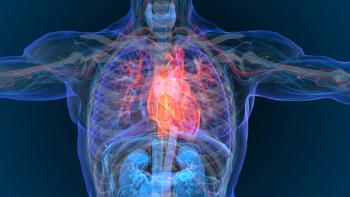
Fun Fact: Cold Memories Could Warm the Body and Influence Metabolism
Key Takeaways
- Recalling cold experiences can influence heat management and metabolism, with brown adipose tissue activity playing a significant role.
- Mice trained to associate cold with specific contexts showed increased metabolic rates, even at neutral temperatures.
A direct link between memories and physical changes has not yet been established.
As warmer weather sweeps in, thinking of “cold memories” could influence how the body manages heat and regulates metabolism, according to findings published by investigators in Nature. Although how temperature is stored and retrieved in the brain to convert into a physiological response is still unknown, environmental thermal challenges are known to trigger the brain to coordinate autonomic and behavioral responses to maintain optimal body temperature.1
The brain and body are interconnected and constantly influence each other to maintain homeostasis. Recent research shows that an individual’s mental state can directly affect bodily functions, and learning through association can change immune and hormonal responses in the body.1
“A large part of this learned control of body temperature seems to be due to increased activity of brown adipose tissue—or brown fat—which can be controlled by innervations originating in the brain. Our brain must learn from the bodily experiences of cold but then feeds back to control how our fat cells respond to cold,” Lydia Lynch, PhD, professor at Princeton University and joint lead study author, said in a news release.2
However, since a direct link between remembering an experience and immediate physical changes that help individuals adapt has not yet been established, researchers investigated whether memories are linked to controlling whole-body metabolism by training a group of mice to remember a cold experience.1 To evaluate how temperature information is stored in the mouse brain, researchers designed a thermoregulatory Pavlovian conditioning experiment using engram labeling technology, which is a physical change in the brain that accounts for a specific memory.1
The study included trained mice in context A at 21 °C and in context B at 4 °C. Initial results demonstrated that mice exposed to a 4 °C environment had a lower core body temperature compared with 21 °C exposure. Additionally, mice in the 4 °C group also demonstrated increased oxygen consumption, energy expenditure, carbon dioxide production, and more movement compared to mice in the 21 °C group. Notably, the researchers observed an increase in metabolic rate and energy expenditure that continued across 3 days of cold training.1
The findings suggest that mice can associate a specific context with a cold temperature (4 °C), as shown by an increased metabolic rate when they were returned to the same context even at a neutral temperature (21 °C). This increase in metabolic rate in the cold-associated context was accompanied by a rise in core body temperature and increased movement, suggesting behavior adjustments similar to being in a cold environment. The elevated metabolic rate was specific to the cold-paired context and not due to the general novelty or prolonged cold exposure, and it was not a general stress response. Furthermore, the study authors noted that mice developed an aversion to the context associated with the cold, demonstrating a learned avoidance behavior linked to the cold memory.1
“In the future, it will be important to test whether the manipulation of cold memories in humans could provide novel avenues for altering metabolism for therapeutic purposes,” Aaron Douglas, PhD, joint lead author on the study, concluded.2
REFERENCES
1. Zamora AM, Douglas A, Conway PB, et al. Cold memories control whole-body thermoregulatory responses. Nature. Published online April 23, 2025. Accessed May 13, 2025. doi:10.1038/s41586-025-08902-6
2. Trinity College Dublin. Think cold, burn fat: how your brain’s memories help you lose weight.SciTechDaily. April 23, 2025. Accessed May 15, 2025. https://scitechdaily.com/think-cold-burn-fat-how-your-brains-memories-help-you-lose-weight/
Newsletter
Stay informed on drug updates, treatment guidelines, and pharmacy practice trends—subscribe to Pharmacy Times for weekly clinical insights.




















































































































































































































